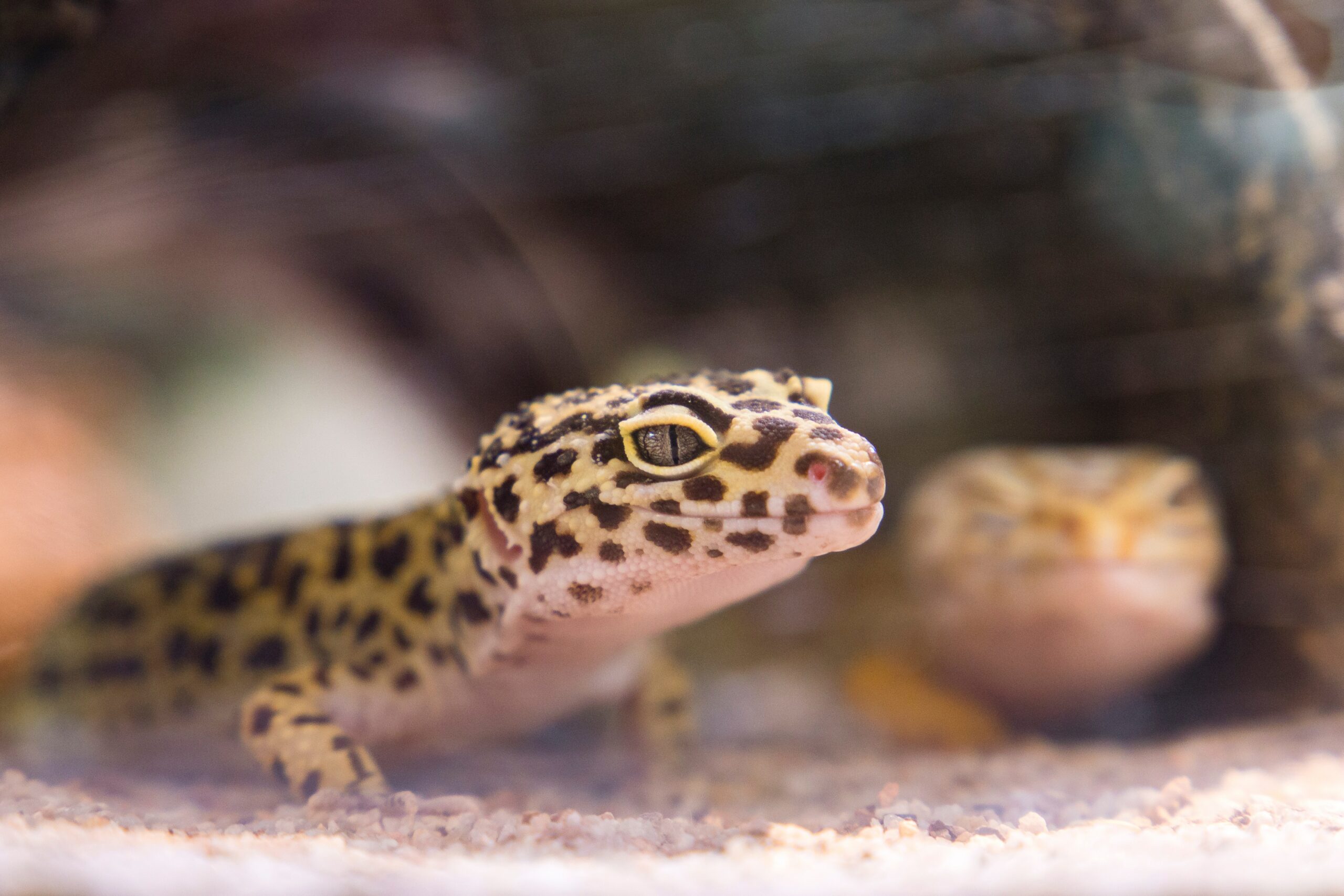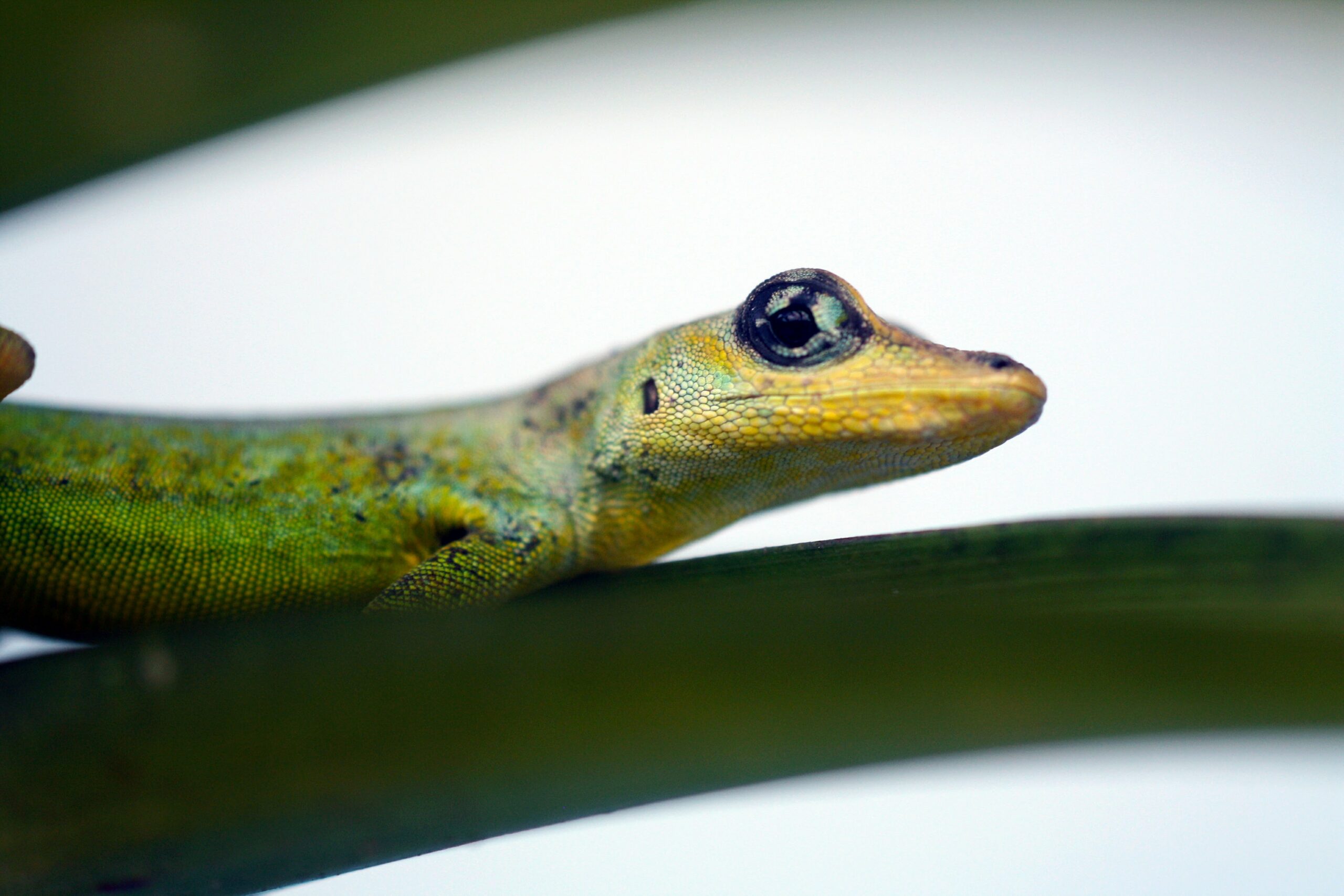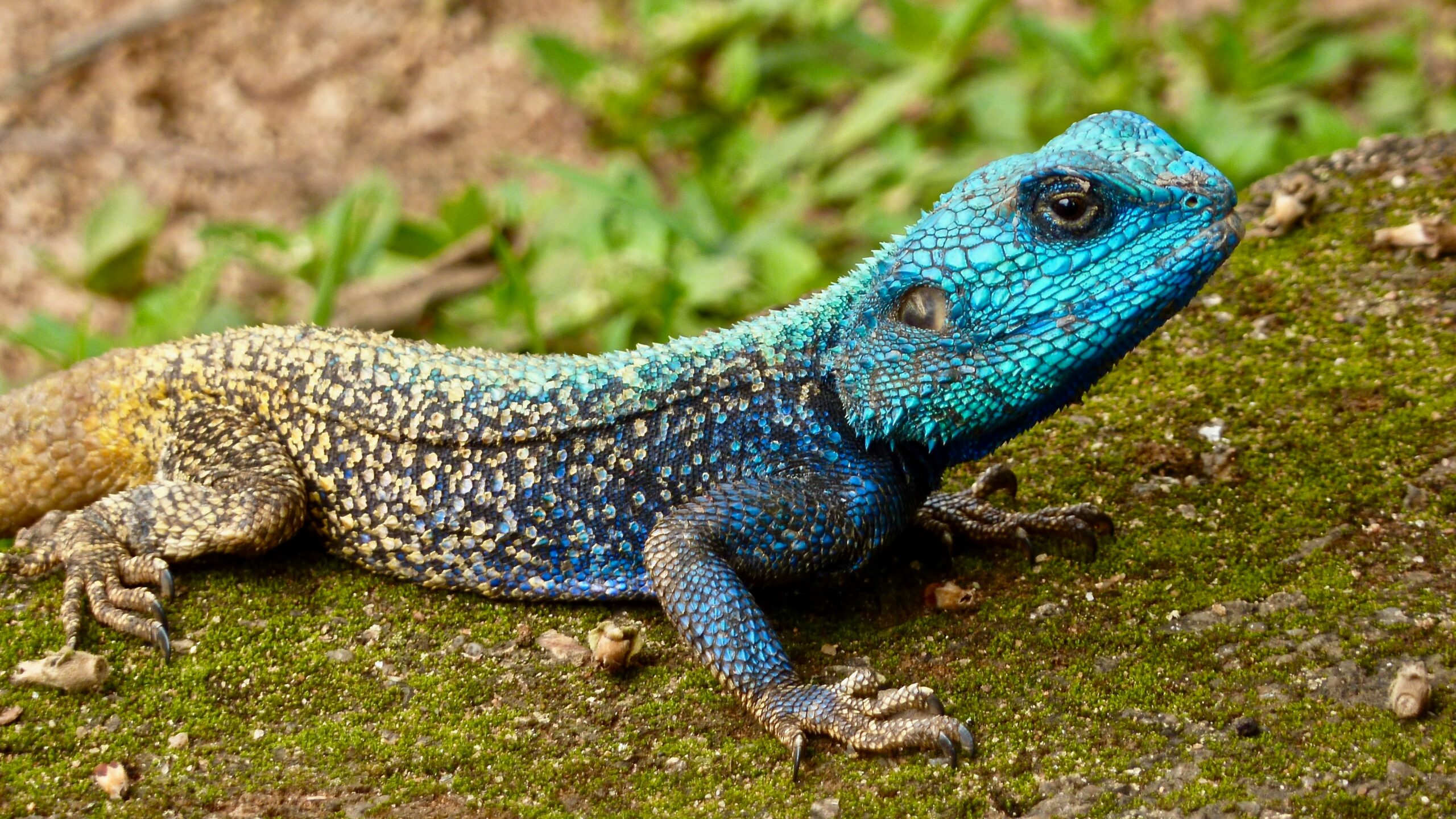Medium-sized lizards offer a wonderful balance between size, manageability, and presence, making them popular choices for reptile enthusiasts looking to keep pets in indoor enclosures. In this article, we will explore the best medium-sized lizards suited for indoor environments, considering space and lifestyle factors.
We will delve into their unique characteristics, space requirements, activity levels, dietary needs, and enclosure considerations. Whether you live in an apartment or have limited space, there is a medium-sized lizard that can thrive in your indoor enclosure. Let’s dive in and discover the perfect match for your reptile-loving lifestyle!
What are medium-sized lizards?
Medium-sized lizards are a diverse group of reptiles that fall between small and large lizards in terms of size. They come in various species and exhibit unique characteristics and behaviors.
These lizards typically range from 12 to 24 inches in length, making them manageable and suitable for enthusiasts who want a reptile that is not too small or too large. With their intermediate size, medium-sized lizards offer a perfect balance between handling ease and striking visual appeal.
Which medium-sized lizard species are suitable for beginners?
When it comes to medium-sized lizards, some species are more suitable for beginners due to their docile nature, ease of care, and adaptability to captive environments. One popular choice for beginners is the Leopard Gecko. Known for their gentle temperament and low maintenance requirements,
Leopard Geckos are great reptile companions. Another beginner-friendly option is the Blue-Tongued Skink, which is renowned for its friendly demeanor and striking blue tongue. These lizards are relatively easy to handle and have straightforward care needs, making them a perfect choice for novice reptile enthusiasts.
How do medium-sized lizards compare to smaller reptiles?
Compared to smaller reptiles, medium-sized lizards offer a notable difference in terms of size and presence. While smaller reptiles may be delicate and require more careful handling, medium-sized lizards provide a more substantial and captivating experience.
Their larger size allows for better observation and interaction, and they often display more intricate patterns and coloration. Additionally, medium-sized lizards tend to exhibit a wider range of behaviors, making them more engaging and fascinating for reptile enthusiasts. If you’re looking for a reptile that strikes a balance between manageability and visual impact, medium-sized lizards are the perfect choice.
What makes medium-sized lizards popular among reptile enthusiasts?

Medium-sized lizards have gained popularity among reptile enthusiasts for several reasons. Firstly, their size makes them more captivating and visually appealing compared to smaller reptiles. They often exhibit intricate patterns, vibrant colors, and unique physical features that make them stand out.
Secondly, medium-sized lizards strike a balance between manageability and presence. They are easier to handle and care for compared to larger species, while still offering an impressive display in the enclosure. Lastly, the diverse range of medium-sized lizard species available ensures that there is a lizard to suit every enthusiast’s preferences and interests, further fueling their popularity in the reptile-keeping community.
Are medium-sized lizards easier to care for than larger species?
Medium-sized lizards generally offer a more manageable care routine compared to larger lizard species. While larger lizards may require larger enclosures, more substantial food portions, and more complex environmental setups, medium-sized lizards can thrive in enclosures of a more reasonable size.
Their care requirements, such as temperature and humidity levels, are also typically easier to maintain. Additionally, medium-sized lizards are often more adaptable to captive environments and can tolerate slight variations in their care conditions. However, it’s important to note that each lizard species has its specific care needs, so thorough research and proper husbandry are still essential for their well-being.
What are the ideal enclosures for medium-sized lizards?
Creating an ideal enclosure for medium-sized lizards is crucial to their health and well-being. The enclosure should provide ample space for the lizard to move, climb, and explore. A glass terrarium or a reptile enclosure with appropriate ventilation is commonly used.
It’s important to select an enclosure size that accommodates the lizard’s adult dimensions, allowing them to exhibit their natural behaviors. Provide suitable substrates, such as reptile carpets or a mix of organic soil and coconut fiber, for burrowing and comfortable footing.
Incorporate climbing structures, hiding spots, and branches to create an enriching environment. It’s also essential to maintain appropriate temperature gradients, and humidity levels, and provide access to UVB lighting to support their physiological needs.
Do medium-sized lizards require specialized heating and lighting?
Yes, medium-sized lizards require specialized heating and lighting to thrive in captivity. Most medium-sized lizards are ectothermic, meaning they rely on external heat sources to regulate their body temperature. It’s crucial to provide a temperature gradient within the enclosure, with a warm basking spot and cooler areas.
This can be achieved using heat lamps, ceramic heat emitters, or under-tank heating pads. Additionally, medium-sized lizards often require access to UVB lighting, which helps them metabolize calcium and maintain proper bone health. UVB bulbs specifically designed for reptiles should be used to provide the necessary UVB radiation. Proper heating and lighting are essential for the overall health and well-being of medium-sized lizards.
Can medium-sized lizards be handled and interacted with?
Yes, medium-sized lizards can be handled and interacted with, but it depends on the individual species and their temperament. Some medium-sized lizards, like the Bearded Dragon and Leopard Gecko, are known for their docile nature and tolerance for handling. These lizards can often be safely held and may even enjoy gentle interaction with their owners.

However, it’s important to approach handling with caution and respect the lizard’s boundaries. Some lizards may be more skittish or prone to stress, and they may not enjoy or tolerate handling as much. Always observe and assess your lizard’s behavior and response to handling, and adjust accordingly to ensure their well-being.
Are there any unique characteristics of medium-sized lizards?
Medium-sized lizards possess various unique characteristics that make them intriguing to reptile enthusiasts. For example, many medium-sized lizards have specialized adaptations for their environment. Some lizards, like the Chameleons, are known for their remarkable ability to change color to blend in with their surroundings or communicate with other individuals.
Others, like the Water Dragons, have semi-aquatic lifestyles, spending time both in water and on land. Medium-sized lizards also exhibit a wide range of behaviors, from basking under heat lamps to climbing branches and hunting prey. Each species has its own set of fascinating traits, making them a captivating addition to any reptile collection.
How do medium-sized lizards behave in captivity?
| Lizard Species | Size | Temperament |
|---|---|---|
| Bearded Dragon | Medium | Docile and friendly |
| Leopard Gecko | Small to medium | Gentle and low-maintenance |
| Crested Gecko | Small to medium | Arboreal and nocturnal |
| Blue-Tongued Skink | Medium | Friendly and adaptable |
| Water Dragon | Medium to large | Semi-aquatic and active |
The behavior of medium-sized lizards in captivity can vary depending on the species and their natural tendencies. Some medium-sized lizards, such as the Bearded Dragon, are known for their relatively calm and sociable nature. They may enjoy basking in the warmth, exploring their enclosure, and interacting with their owners.
On the other hand, species like the Crested Gecko are arboreal and nocturnal, spending their days hiding and becoming more active during the evening hours. Observing and understanding the natural behaviors of your specific medium-sized lizard species is essential to provide them with an appropriate environment and ensure their overall well-being and happiness.
How do the dietary needs of medium-sized lizards influence enclosure size?
Dietary needs play a role in determining enclosure size for medium-sized lizards. Lizards with higher energy requirements, such as Bearded Dragons, may need larger enclosures to accommodate feeding stations, basking areas, and space for exercise. Consider the dietary needs and feeding habits of the species you choose to ensure their nutritional well-being.
Do medium-sized lizards require additional hiding spots in their enclosures?
Yes, providing hiding spots is essential for medium-sized lizards to feel secure and exhibit natural behaviors. Lizards like Crested Geckos and Green Anoles benefit from a variety of hiding places, including plants, branches, and specially designed hideouts. These spaces provide privacy and help reduce stress.
Are there medium-sized lizards that enjoy climbing or burrowing?
Certainly! Some medium-sized lizards have specific behavioral tendencies when it comes to climbing or burrowing. Crested Geckos are arboreal and appreciate vertical elements like branches and vines in their enclosure. On the other hand, species like Blue-Tongued Skinks enjoy burrowing and benefit from substrates that allow them to dig and create tunnels.
Can medium-sized lizards coexist with other reptiles in the same enclosure?
While cohabitation of reptiles can be possible under certain circumstances, it’s generally not recommended to house different species together in the same enclosure.
Mixing species can lead to stress, competition for resources, and potential health risks. It is best to provide separate enclosures tailored to the specific needs of each lizard species.
How does the lifespan of medium-sized lizards impact enclosure choices?
Considering the lifespan of medium-sized lizards is crucial when setting up their enclosures. Longer-lived species, such as Bearded Dragons and Blue-Tongued Skinks, will require enclosures that can accommodate their needs throughout their lifespan. Investing in a spacious and durable enclosure from the beginning can ensure the long-term well-being of these fascinating reptiles.

Are there specific environmental conditions required for medium-sized lizards?
Yes, medium-sized lizards have specific environmental requirements to maintain their health and well-being. Factors such as temperature, humidity, and lighting play vital roles in creating a suitable habitat. Research the specific needs of the lizard species you choose to ensure you can provide the necessary environmental conditions within the enclosure.
In Conclusion
Medium-sized lizards offer a captivating and manageable reptile-keeping experience. Their size strikes a perfect balance between handleability and visual appeal, making them popular among reptile enthusiasts. With proper care and attention to their specific needs, medium-sized lizards can thrive in indoor enclosures.
They require suitable enclosures with appropriate heating, lighting, and environmental enrichment. Some species are more suitable for beginners, while others may have unique characteristics or behaviors. By understanding the behavior and care requirements of medium-sized lizards, you can create a rewarding and enjoyable reptile-keeping experience for both yourself and your scaly companion.




